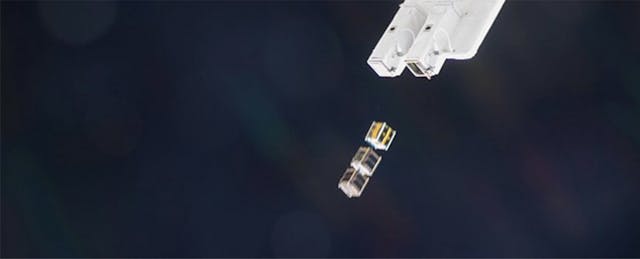How much has the drought affected California? Using satellites and experiment tools, young scientists--from grades 8-12--can use data collected from sensors in space and measure changes in the surface area of lakes.
These experiments are possible thanks to Salt Lake City, UT-based Ardusat, which just raised $1 million in seed funding from Space Florida, Fresco Capital, its partner company, Spire (which raised $25 million in Series A funding last July), and other undisclosed investors.
“At some point, everybody wanted to be an astronaut--everyone is a little bit fascinated with what’s happening in space,” explains Ardusat president Sunny Washington. “Our mission is to make space accessible for students--not just for the super wealthy, but for everybody.”
Since August 2014, students have used Ardusat satellites and “Space Kits” to conduct experiments. The satellites, or “cubesats,” are launched through rideshares with larger satellites, and contain sensors which collect data. These cubesats orbit the Earth at nearly five miles per second, collecting a variety of data that students can use to estimate regional concentrations of greenhouse gases, or quantify risk of sunburn based on UV light levels.
An individual “Space Kit,” designed for 3-5 students working together, costs $150, and a “Classroom Launch Pack,” containing seven space kits, costs $2,500. Each kit contains boards and sensors to use in conjunction with the Spire CubeSat satellite, including an Arduino Uno, sensors for luminosity, temperature, and UV light, and a gyroscope.
Ardusat offers 25 lesson plans to help educators take advantage of the “Space Kit” resources. For example, an eighth grade science class could use the sensors to learn about predicting and tracking thunderstorms. Students could collect temperature readings from across the US using the satellite. After gathering data, students could plot atmospheric hot and cold spots on a map, and compare their weather predictions to those made by their local TV station’s meteorologists.
Ardusat currently works with 44 schools: some use the tools as a shared resource across multiple science classes; others use it as part of an afterschool science club.
With the funding, Ardusat will launch its Experiment Platform, where students and teachers can post data from their experiments for public use. Washington envisions students learning from differences in data collected around the world. “We live in Utah, which is known for poor air quality,” she says. “Other students could take an experiment and iterate on it, run it somewhere else in the world, and compare data.”


